Every car enthusiast can recall that first V8 rumble. It’s a heartbeat with exhaust pipes, not courteous or quiet. The sound seeps into your skin rather than merely filling your ears. It is mechanical poetry that embodies freedom, rebellion, and adrenaline.
American muscle cars have been the rolling soundtrack of ambition for over 60 years. They were created by idealists who thought that a car could represent strength, pride, and independence in addition to being a useful tool. These vehicles have influenced not only the history of automobiles but also the very identity of the United States, from assembly lines in Detroit to highways in the desert. From its birth soaked in gasoline to its electrified rebirth, this is the history of muscle cars tale of that spirit.
Contents
The Birth Of A Legend (1960–1967)
The early 1960s were golden years for America. The suburbs were booming, rock ’n’ roll was shaking the radio, and young people were craving something fast enough to match their energy. The industry responded not with luxury—but with power.
It all began in 1964 with Pontiac’s bold design of the ’64 Lincoln Continental and the legendary Chevy’s revolutionary 1964 Corvette Stingray. These cars signaled that America was ready for something bolder — performance wrapped in style.
The Birth Of The Pontiac GTO
In 1964, a young engineer named John DeLorean saw an opportunity hidden in corporate red tape. General Motors had rules against large engines in small cars—but DeLorean and his Pontiac team quietly dropped a 389-cubic-inch V8 into a Tempest coupe. The result was the Pontiac GTO—a name that would echo through automotive history.
It was raw, loud, and slightly dangerous. And America loved it.
Engine: 389 cu in (6.4L) V8
Power: 325–348 hp
Torque: 428 lb-ft
0–60 mph: ~6.6 seconds
Base Price (1964): Around $2,800
The GTO didn’t just start a market—it started a movement. Teenagers lined up to buy them, insurance companies scrambled to react, and Ford, Chevy, and Dodge realized they needed answers—fast.
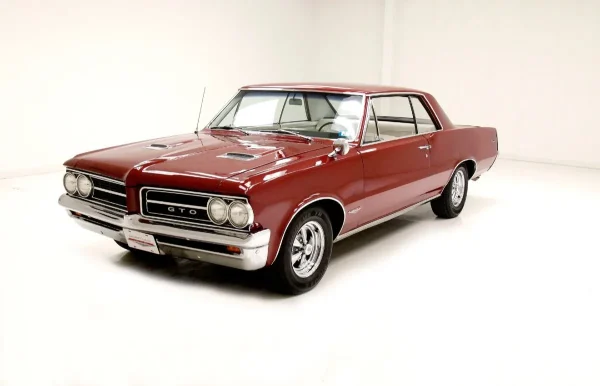
The Mustang Revolution
When Ford released the 1965 Mustang, it didn’t call it a “muscle car,” but it might as well have. With its long hood, short deck, and a wide range of V8 options, the Mustang brought performance to the masses. It sold over 400,000 units in its first year, proving that Americans didn’t just want power—they wanted style, speed, and affordability rolled into one.
Engine (GT model): 289 cu in (4.7L) V8
Power: 271 hp
0–60 mph: 7.0 seconds
The Mustang became the people’s sports car—a gateway drug to the muscle era.
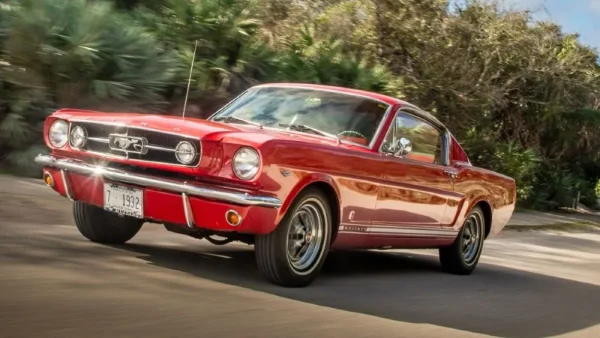
Cultural Impact
The mid-’60s were an explosion of identity. Music festivals, civil rights marches, and the Vietnam War defined a generation that refused to be told what to do. Cars became symbols of defiance. The GTO and Mustang weren’t just machines; they were statements: We’ll go faster because we can.
By 1967, the template was set—big engine, small body, rear-wheel drive, and attitude to spare. The stage was ready for the wildest years the car world had ever seen.
The Golden Age (1968–1972)
If the early ’60s built the foundation, the early ’70s poured in the gasoline and lit the match. This was the golden era—a time when engineers and designers were allowed to dream without restraint. Gas was cheap, horsepower wars were raging, and every Detroit automaker was gunning for the top of the drag strip.
Few cars embodied the spirit of the age like the unforgettable 1969 Camaro , or the sinister 1970 Dodge Charger. Pontiac answered with its iconic 1967 Firebird blending muscle with refinement.
The 1969 Chevrolet Camaro Z/28
Chevrolet wanted a car that could beat Ford at its own game. The result was the 1969 Camaro Z/28, a street-legal race car designed for Trans-Am competition. With its 302-cubic-inch small-block V8, it wasn’t about brute force alone—it was about balance and control.
Engine: 302 cu in (4.9L) V8
Power: 290 hp (factory rated; real output closer to 350+)
Torque: 290 lb-ft
Top Speed: 125 mph
0–60 mph: ~6.9 seconds
Drivers loved it because it could handle corners as well as straight lines—a revelation for American performance at the time. The Z/28 became an instant icon, especially after its starring role in Two-Lane Blacktop and countless street races across the country.
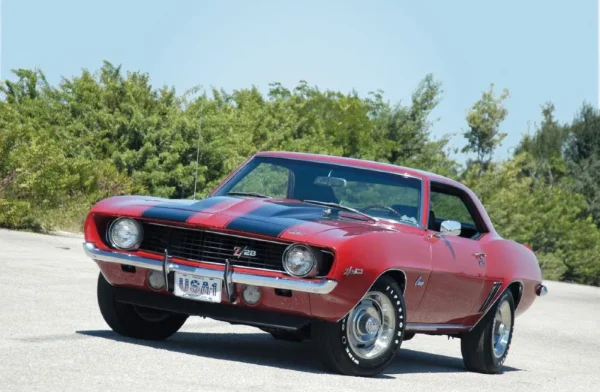
The 1970 Dodge Charger R/T
Then came something meaner—the 1970 Dodge Charger R/T. The Charger looked like a predator, and with the 426 Hemi V8, it had the bite to match. Producing 425 horsepower and 490 lb-ft of torque, it could hit 60 mph in just over five seconds—a staggering feat for a car weighing nearly two tons.
Engine: 426 cu in (7.0L) Hemi V8
Power: 425 hp
Torque: 490 lb-ft
Quarter Mile: 13.5 seconds @ 105 mph
It was pure, unapologetic excess. The Charger didn’t whisper; it shouted from the rooftops. When it roared down Woodward Avenue, windows shook.
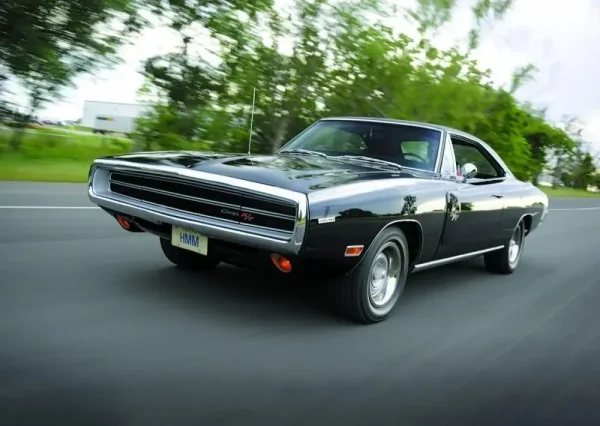
The Winged Warriors: 1970 Plymouth Superbird
The late ’60s also brought NASCAR glory. Plymouth, desperate to compete with Ford’s aerodynamic Torino, created the Superbird—a long-nosed, high-winged missile built purely to dominate ovals.
Engine: 426 Hemi V8
Power: 425 hp
Top Speed: Over 200 mph (on track)
Production: Only 1,920 built
On the street, it was outrageous. But on the track, it was unstoppable. NASCAR quickly banned the aero cars, cementing the Superbird’s place in legend.

Why This Era Mattered
Between 1968 and 1972, Detroit’s “Big Three” reached their creative peak. Horsepower figures soared, styling became art, and every model was an expression of confidence. The 1970 Chevelle SS 454, 1969 Mach 1 Mustang, and 1971 Dodge Demon 340 filled driveways with thunder. America wasn’t just building cars—it was building icons. But the good times wouldn’t last forever. Want to go deeper into the legends? Explore more muscle car legends.
The Shadows Of The 1970s — Oil, Emissions, And Survival
Every great era meets its reckoning. By 1973, the world had changed overnight. Gas prices soared during the oil embargo, and muscle cars — thirsty, loud, and unapologetic — became the villains in a new energy-conscious world. The government tightened emissions laws, insurance companies tripled premiums for performance cars, and the muscle car’s big V8 heart suddenly looked outdated.
The Oil Crisis That Crippled Detroit
Americans waited in long lines for gasoline. Car buyers turned toward smaller, more efficient imports from Japan. Automakers like Ford, GM, and Chrysler were forced to detune their engines and pivot to survival. Where once a muscle car offered 400+ horsepower, now it struggled to break 180. Compression ratios dropped, catalytic converters choked power, and once-iconic badges disappeared entirely.
Survivors Of The Storm
A few models fought to keep the dream alive:
1974 Pontiac Trans Am SD-455 — The last true brute of the era. Its 7.5L V8 produced around 290 horsepower, defying emissions strangulation. It looked outrageous with its “screaming chicken” hood decal, but it was also a defiant statement: we’re not done yet.
1977 Pontiac Firebird Trans Am — Immortalized in Smokey and the Bandit, this car brought back charisma even if it had less bite. Its 6.6L V8 made a modest 200 hp, but the car’s attitude made it unforgettable.
1978 Ford Mustang II Cobra II — Downsized, detuned, and divisive, yet it bridged a crucial gap. Ford knew the Mustang name was too important to abandon.
Despite the fall in power, enthusiasts began to experiment. Garages became laboratories of restoration and rebellion. America’s street racers learned to rebuild carburetors, swap cams, and wrench their way back to speed. The factory may have abandoned muscle, but the culture didn’t.
Rebellion Reborn — The 1980s And 1990s
As disco faded and Reaganomics took hold, something began stirring in Detroit again. Technology was catching up — fuel injection replaced carburetors, turbocharging returned, and engineers rediscovered how to make horsepower without choking the planet. This was the muscle car’s second wind.
The 1987 Buick GNX — A Turbocharged Monster
While muscle cars had traditionally relied on big V8s, Buick took a different path. The 1987 Buick GNX was a blacked-out, sinister-looking coupe with a turbocharged 3.8L V6 producing 276 hp and 360 lb-ft of torque — and real-world numbers suggested even higher output.
It could run the quarter-mile in 13.5 seconds, outpacing Ferraris and Corvettes of the day. MotorWeek called it “a four-seat rocket.”
Engine: 3.8L Turbo V6
Power: 276 hp
Torque: 360 lb-ft
0–60 mph: 4.7 seconds
Only 547 were ever built, instantly turning the GNX into a collectible. It reminded America that brute force wasn’t the only path to domination.
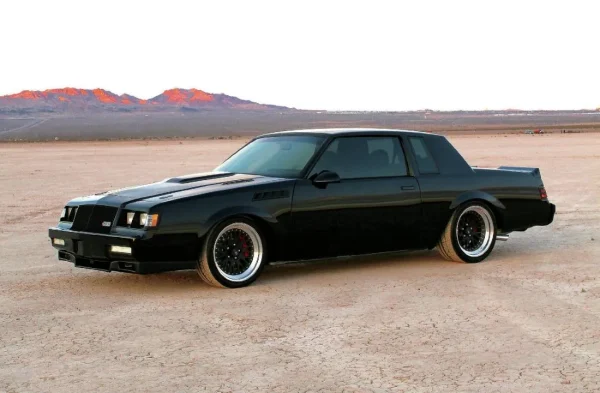
The 1993 Ford Mustang SVT Cobra
The Mustang had endured a rocky road through the ’70s and ’80s, but the Special Vehicle Team (SVT) changed everything in 1993. The SVT Cobra used a 5.0L V8 with 235 hp — not record-breaking, but it handled, stopped, and cornered better than any Mustang before it. It wasn’t just about drag racing anymore; it was about precision. Ford was rediscovering the art of balanced performance.
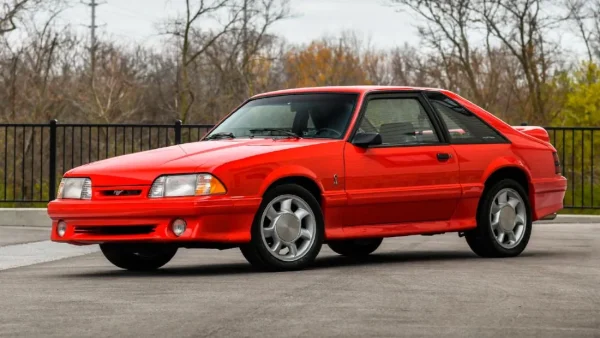
The 1996 Chevrolet Camaro Z28 & 1998 Trans Am WS6
Chevrolet and Pontiac also reignited their flames. The 4th-gen Camaro Z28 packed an LT1 5.7L V8 producing 275 hp, while the later LS1 engine (1998+) pushed output to 305 hp. Pontiac’s WS6 package added aggressive styling and Ram Air induction, reviving the muscle car’s swagger. By the late 1990s, muscle was officially back. The horsepower wars were brewing again, and this time, Detroit was ready to fight on new terms.
The Modern Muscle Revival (2005–2025)
The 21st century didn’t just resurrect muscle — it redefined it. Nostalgia met technology, and Detroit found a way to marry heritage with modern engineering.
The 2005–2014 Ford Mustang GT
When Ford released the fifth-generation Mustang in 2005, the world took notice. Its retro-inspired design channeled the classic ’60s fastback while offering modern amenities and safety. Then came the 2011 Mustang GT, powered by the all-new 5.0L “Coyote” V8 delivering 412 hp. With a six-speed manual and rear-wheel drive, it was the spiritual successor to the original pony car.
Engine: 5.0L V8
Power: 412–460 hp (depending on year)
Torque: 390 lb-ft
0–60 mph: 4.2 seconds
It proved muscle cars could evolve without losing their soul.
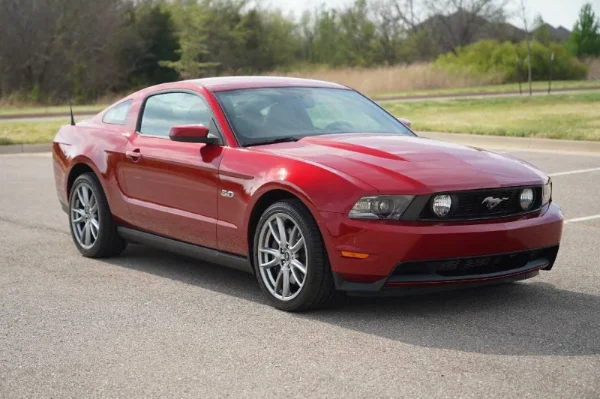
The 2008–2023 Dodge Challenger — Old School, Supercharged
Few modern cars captured the essence of 1970 quite like the reborn Dodge Challenger. Its wide, retro stance and thunderous Hemi engines made it a modern legend. The 2015–2023 Challenger Hellcat took things to absurd levels with a 6.2L supercharged V8 producing 707 horsepower — enough to melt tires and steal hearts.
The ultimate version, the 2023 Challenger SRT Demon 170, raised the bar to an unthinkable 1,025 hp on E85 fuel, making it the fastest production muscle car ever built.
0–60 mph: 1.66 seconds (on drag slicks)
Quarter Mile: 8.91 seconds (certified NHRA run)
That’s not a typo — it’s factory-certified insanity.
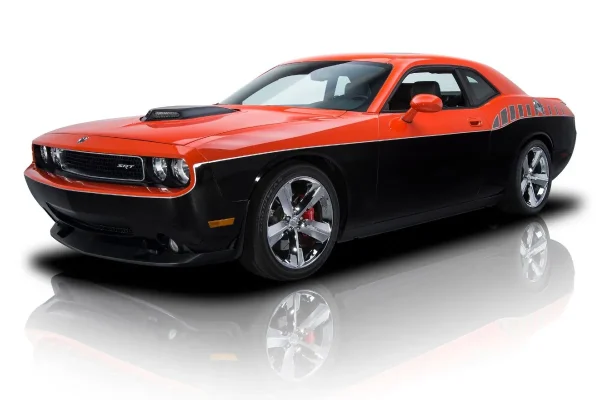
Chevrolet Camaro ZL1 — Detroit’s Supercar Slayer
Chevrolet’s response was equally fierce. The Camaro ZL1, with its 6.2L LT4 supercharged V8, packed 650 hp and 650 lb-ft of torque, along with Magnetic Ride suspension and track-ready aerodynamics. It wasn’t just muscle—it was engineering brilliance that could hang with a Porsche 911 GT3.
0–60 mph: 3.5 seconds
Top Speed: 198 mph
The Camaro ZL1 became the thinking man’s muscle car: savage when you wanted, civilized when you needed.
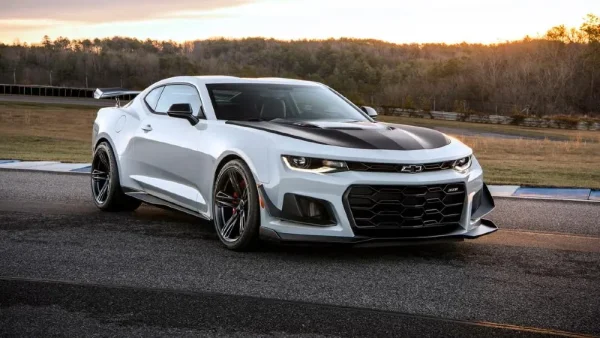
Modern Muscle Culture
By the late 2010s, muscle cars weren’t relics — they were symbols of identity. Owners customized them, tuned them, and raced them on YouTube. They weren’t just cars; they were part of a tribe. Despite rising EV trends and stricter emissions rules, the modern era gave enthusiasts a final, glorious decade of supercharged thunder — the last stand of internal combustion muscle.
Future Of American Muscle — Electric Power, Classic Soul
The 2020s mark a defining moment — the muscle car’s biggest transformation since its birth. The sound of a rumbling V8, that primal mechanical growl that once defined American freedom, is giving way to the whisper of electrons. It’s not extinction — it’s evolution.
Dodge has already unveiled the Charger Daytona SRT EV, an all-electric muscle car boasting up to 800V Banshee propulsion, simulated exhaust notes that mimic the feel of combustion, and instant torque that hits harder than any Hellcat ever could. Purists might scoff, but numbers don’t lie: 0–60 mph in roughly 2 seconds. That’s quicker than any gas-powered muscle ever built.
Ford’s Mustang Mach-E, though controversial among traditionalists, proves that performance doesn’t have to mean premium fuel. The GT Performance Edition delivers 480 hp and 634 lb-ft of torque, more torque than a 1969 Boss 429. Meanwhile, Chevrolet’s Camaro EV successor, expected by 2026, will target similar performance benchmarks — proving that American automakers aren’t abandoning muscle, only redefining it.
What ties these modern electrified monsters to their ancestors isn’t the engine, but the attitude. Muscle cars were never just about specs — they were about defiance, accessibility, and raw American identity. Electric power, in a way, gives designers new freedom to chase that same rebellious energy with modern tools.
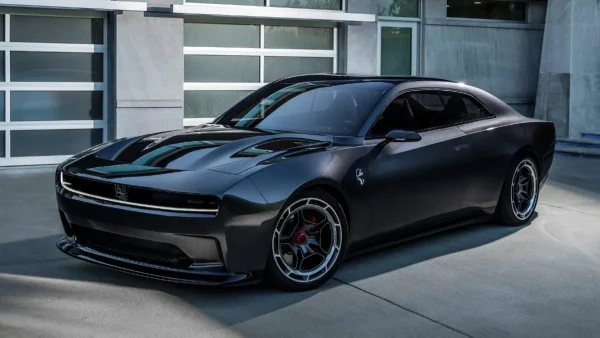
Legacy Reimagined — The Soul Of The Muscle Era Lives On
Even as the age of EVs dawns, the legacy of classic muscle cars grows stronger than ever. Collector values have skyrocketed. A pristine 1970 Plymouth Superbird sold for over $1.6 million at auction. Restomod culture — where old-school muscle meets modern tech — is booming, blending nostalgia with today’s performance and comfort standards. In the hands of restorers and builders, the muscle car is being reborn for a new era. Read about how restorers are reviving American legends
Companies like Ringbrothers, Kindig-It Design, and Classic Recreations are restoring icons like the 1967 Firebird and 1970 Charger with carbon-fiber bodies, independent rear suspensions, and 800+ hp LS-based engines. It’s not just restoration — it’s resurrection.
And it’s not limited to garages. Across America, local car meets, museum exhibits, and YouTube channels are introducing younger generations to names like Hemi, LS6, 428 Cobra Jet, and Ram Air IV. The muscle car — in every form — has become a bridge between eras, where nostalgia meets innovation.
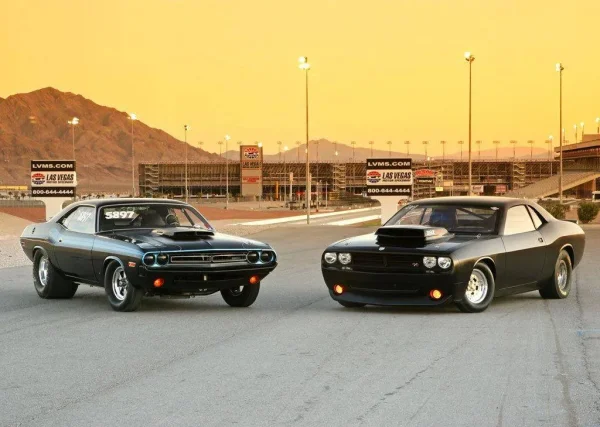
Key Takeaway: What Makes History Of Muscle Cars Timeless
At its core, the American muscle car has always symbolized power, personality, and freedom. From the backroads of the 1960s to the digital racetracks of the 2020s, muscle cars capture the essence of American rebellion — the desire to go faster, louder, and further than anyone else.
Whether it’s a ’69 Camaro Z/28 thundering through a small town, or a 2024 Mustang GT ripping through an urban tunnel, they share one truth: muscle cars are not about transportation — they’re about transformation.
Conclusion: The Muscle Car Never Died — It Evolved
In every era, the American muscle car has been more than steel and rubber — it’s been an expression of willpower, rebellion, and individuality. The future may be electric, but its heart will always beat to the rhythm of raw American horsepower — whether it’s unleashed through pistons or powered by current.
So when you turn the key (or press the start button), remember: you’re not just driving — you’re continuing a story that began six decades ago and still has miles left to run.
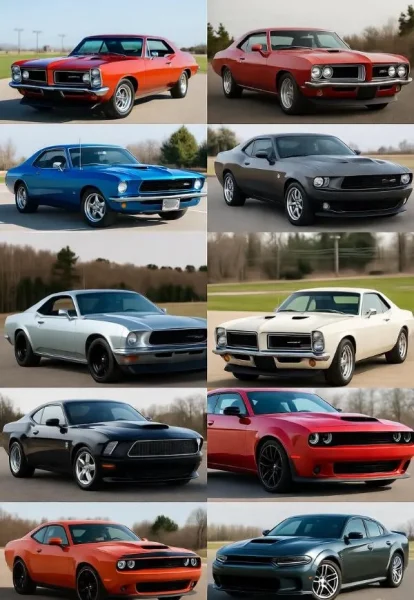
FAQ
Q: What defines an American muscle car?
A: muscle car is a performance-oriented, mid-size American vehicle with a powerful V8 engine, rear-wheel drive, and an emphasis on straight-line speed and affordability.
Q: What was the first true American muscle car?
A: The 1964 Pontiac GTO is widely considered the first official muscle car, combining a big 389-cubic-inch V8 with a midsize frame and affordable price.
Q: Why did muscle cars decline in the 1970s?
A: combination of the oil crisis, stricter emissions laws, and rising insurance rates caused horsepower ratings and sales to fall dramatically.
Q: Are modern muscle cars faster than the classics?
A: Yes. Cars like the Dodge Challenger Hellcat and Camaro ZL1 far exceed classic models in acceleration, top speed, and handling due to advanced technology and materials.
Q: Will electric cars replace traditional muscle cars?
A: Electric cars will expand the definition of muscle, not erase it. The future of American muscle will likely merge high torque, retro styling, and new technology to preserve the spirit of power.
Sources
Sources: MotorTrend, Car and Driver, GM Heritage Center, Ford and Dodge Garage


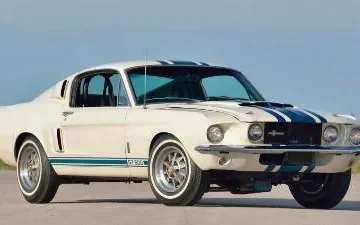
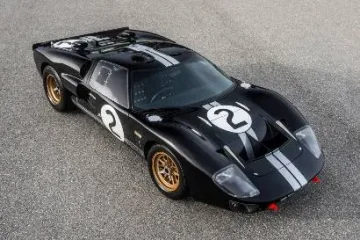
0 Comments